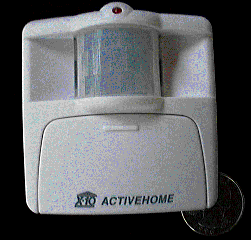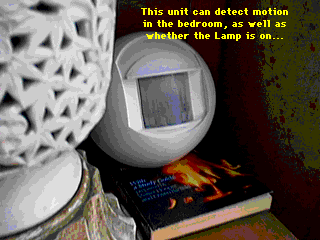

|
Area Sensors Passive InfraRed Proximity (rf field) Microwave/Radar Ultrasonic Vibration Video |
Local Sensors Active InfraRed (light beam) Visible Light beam Laser Beam Contact Tilt Proximity Strain/Stress |
|
In its simplest form, it looks like an old metal transistor with a black plastic 'window' on the top. |

|
| Currently, there have been 3 different 'upgrades' to this device. But the last two are functionally identical. The latest is simply more rugged for outdoor use. |
 |

|
Perhaps the next most common motion sensor is the DM10A which is also a PIR
type, but is much larger than the Hawkeye, and not very attractive. It does however
have larger batteries, and better range of 'field', as well as transmitter distance. It never sends an OFF command, but does send an ON command every 25 seconds or so as long as motion continues. And it definitely has a Dusk sensor that uses the 'base address' + 1. |
|
Perhaps the oldest, and most loved/hated, is the PR511. It is basically a PIR/Dusk
combination sensor that was really designed to sense driveway or walkway motion,
and based on whether it was 'dark', can turn on up to 4 other X-10 addresses. It is very nice to have this unit turn on it's lights directly sometimes. It is cheaper to buy this device with the floodlights rather than without. (?!) |

|
Copyright 2007, Sand Hill Engineering Inc. All rights reserved.
![]()
Last modified: April 29, 2002
Michael Ferguson, webmaster@shed.com